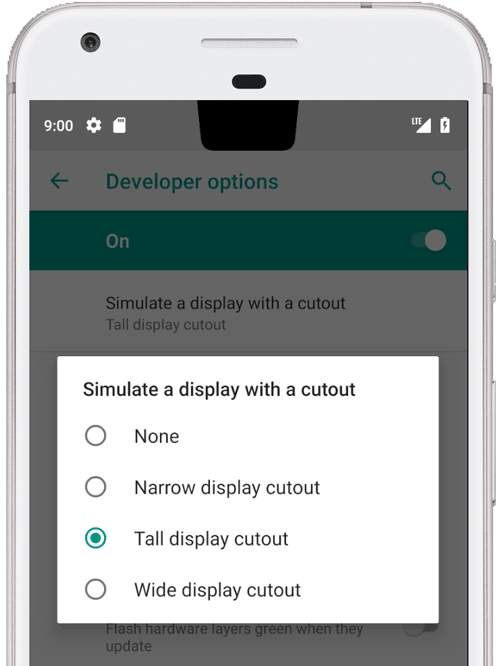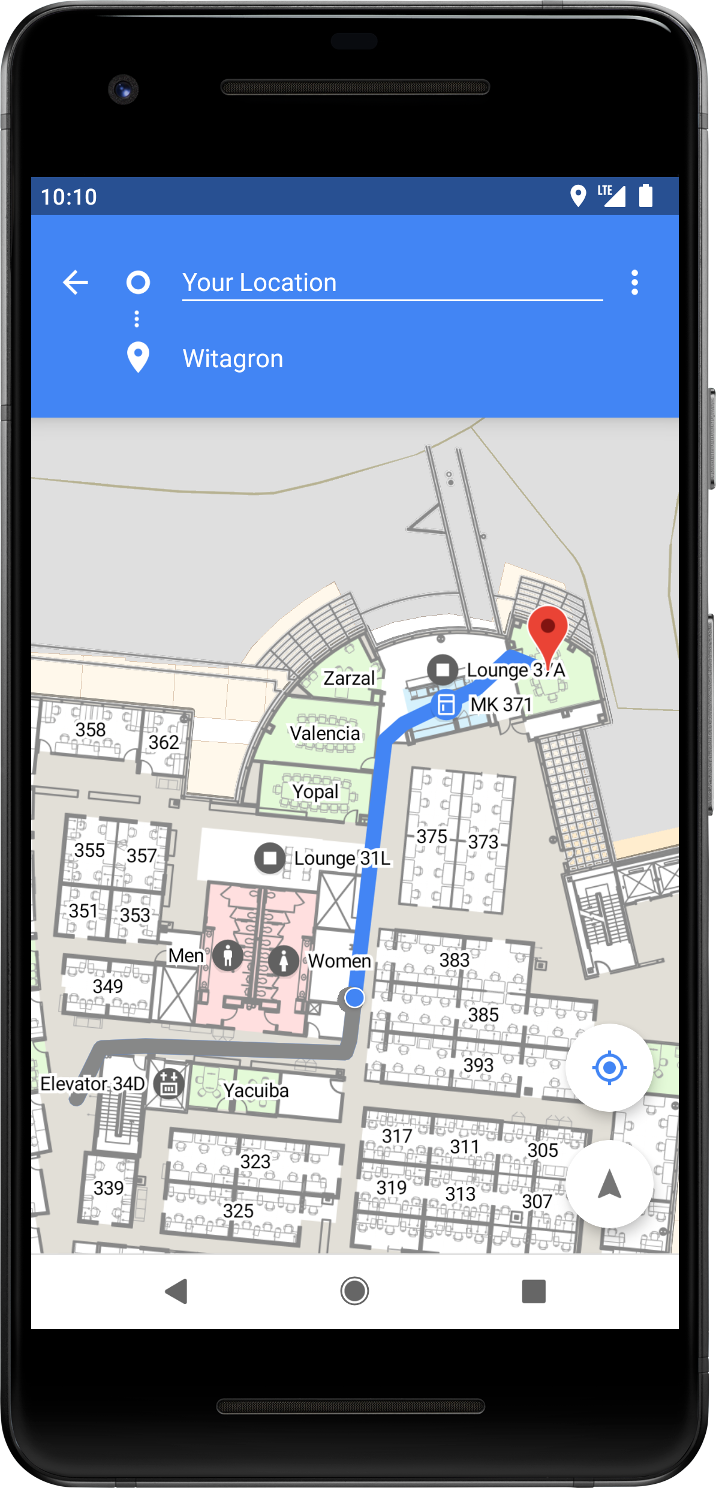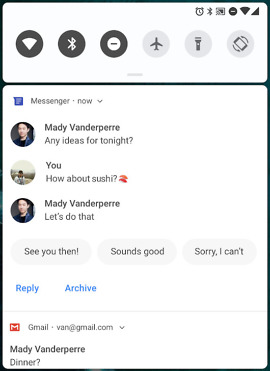The first Developer Preview for Android P was just released, and with it, we’re beginning to learn what Android P is all about. Of course, the Android developers haven’t spoiled everything, but with the publishing of Android P’s features overview, we can start piecing everything together.
As was reported, we are seeing native support for top notches in displays, platform support for indoor positioning with Wi-Fi RTT (aka IEEE 802.11mc WiFi protocol), enhancements for notifications, simplified Notification Channels, and more.
Let’s dive right in!
Display Cutout Support
Let’s start with this, shall we? Inside Android P, “display cutouts” will receive native support, allowing Android to conform to however Android OEMs are implementing their notices. As we can see in the image below, there will be all different kinds of cutaways — Narrow, Tall, and Wide. There’s also a None option, which is good, since there are still phones out there that won’t have a cutout.
According to Google, “Android P offers support for the latest edge-to-edge screens with a display cutout for camera and speaker. The new DisplayCutout class lets you find out the location and shape of the non-functional areas where content shouldn’t be displayed.”
The Android team even goes so far as to add a cutout simulator for any device running Android P, inside of the Developer Options. From inside that menu, click Drawing > Simulate a display with a cutout, then select the size of cutout you want to preview.
The notches are coming.
Indoor Positioning with Wi-Fi RTT
Android P adds platform support for the IEEE 802.11mc Wi-Fi protocol, aka the WiFi Round-Trip-Time (RTT). With this, you can take advantage of indoor positioning inside of your apps.
To put it in the most layman’s way possible, your phone, when using a particular app with this functionality, will bounce its location off of local WiFi Access Points (APs), determining your exact position inside of a structure such as a shopping mall or airport.
As the Android team puts it, “If your device knows the distance to 3 or more APs, the API uses a multilateration algorithm to estimate the device position that best fits those measurements. The result is typically accurate within 1 to 2 meters.”
Notifications
Building on the work done inside of Oreo, Android P offers enhancements to the notification system for Android. In particular, the Android team focused on Notification Channels, adding full images inside of notifications, simplified support for conversation participants, ability to save replies as drafts, as well as the native ability to recognize if a conversation is a group conversation.
Not only will you see the aforementioned enhanced abilities inside of notifications, but Google specifically mentions that the Android P platform supports, “the same suggested replies available in your messaging app.”
So, yeah, suggested replies will be system-wide now.
As for Notifications Channels…
- Blocking channel groups: Users can now block entire groups of channels within the notification settings for an app.
- New broadcast intent types: The Android system now sends broadcast intents when the blocking state of notification channels and channel groups’ changes.
Android’s Do Not Disturb mode wasn’t left out either. The Android team details new priority categories, which include the following.
- New Do Not Disturb priority categories:
NotificationManager.Policyhas two new policy constants:PRIORITY_CATEGORY_ALARMS(alarms are prioritized) andPRIORITY_CATEGORY_MEDIA_SYSTEM_OTHER(media, system, and game sounds are prioritized).
Multi-camera support and camera updates
For you camera lovers, Android P has something nifty for you, too. Apparently, you can now access streams simultaneously from two or more physical cameras on devices running Android P.
Furthermore, on devices with either dual-front or dual-back cameras, developers can now create, “innovative features not possible with just a single camera, such as seamless zoom, bokeh, and stereo vision.”
Those are the big things. Below, I’ll list out a lot of the developer-focused changes, but for more details, be sure to follow this link to see Google’s complete writeup on Android P.
ImageDecoder for bitmaps and drawables
Android P introduces
ImageDecoderto provide a modernized approach for decoding images. You should useImageDecoderto decode an image rather than theBitmapFactoryandBitmapFactory.OptionsAPIs.
Animation
Android P introduces a new
AnimatedImageDrawableclass for drawing and displaying GIF and WebP animated images.
HDR VP9 Video, HEIF image compression, and Media APIs
Android P adds built-in support for High Dynamic Range (HDR) VP9 Profile 2, so you can now deliver HDR-enabled movies to your users from YouTube, Play Movies, and other sources on HDR-capable devices.
Data cost sensitivity in JobScheduler
With Android P,
JobSchedulerhas been improved to let it better handle network-related jobs for the user, in coordination with network status signals provided separately by carriers.
Neural Networks API 1.1
The Neural Networks API was introduced in Android 8.1 (API level 27)to accelerate on-device machine learning on Android. Android P expands and improving the API, adding support for nine new ops — Pad, BatchToSpaceND, SpaceToBatchND, Transpose, Strided Slice, Mean, Div, Sub, and Squeeze.
Autofill framework
Android 8.0 (API level 26) introduced the autofill framework, which makes it easier to fill out forms in apps. Android P introduces multiple improvements that autofill services can implement to further enhance the user experience when filling out forms.
Security enhancements
Android P introduces a number of new security features, including a unified fingerprint authentication dialog and high-assurance user confirmation of sensitive transactions.
Client-side encryption of Android backups
Android P enables encryption of Android backups with a client-side secret. Because of this privacy measure, the device’s PIN, pattern, or password is required to restore data from the backups made by the user’s device.
Accessibility
Android P introduces several actions, attributes, and methods to make it easier for you to work with the accessibility framework in order to enhance accessibility services for users.






Collapse Show Comments34 Comments